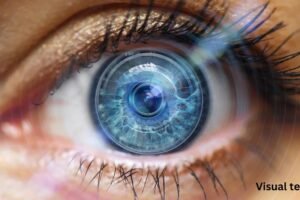Visual testing of an application is frequently the first determining element whether or not a buyer considers it to be a worthwhile purchase. The necessity of getting the application’s visual look perfect and ensuring there are no visual problems at the time of deployment cannot be overemphasized. That is why visual testing exists: to guarantee that no rendering errors occur and that the user interface seems consistent as intended.
This type of testing differs significantly from functional testing as it focuses on “visual” flaws. Functional testing ensures that the programmed completes the necessary tasks. However, visual testing ensures that the application renders accurately as intended in terms of its visual elements such as size, location, and color. Let’s deep dive into what is visual testing and learn different strategies to perform it.
What is visual testing?
Visual testing is an application testing approach. It helps to examine the functioning and appearance of an application’s graphical user interface (GUI). Its purpose is to guarantee that the programmed fulfills the aesthetic and functional needs of the client. Because an application’s quality is frequently rated based on the overall experience and visual UI, visual testing becomes an essential tool to ensure success.
Visual testing can be performed manually or with automated visual testing tools. Manual visual testing involves a human tester ensuring that the user interface appears and functions as expected. This form of testing can be time-consuming and error-prone. But it is valuable for identifying problems that automated techniques may overlook.
Automated visual testing is faster and more accurate than manual testing. This is because it employs application tools that replicate human vision to assess an application’s user interface. These tools take screenshots of the UI and compare them to anticipated UI photos to find any deviations. Therefore, automated visual testing tools may rapidly detect any visual abnormalities and guarantee that the application’s UI appears as expected.
Visual testing may enhance the quality of an application’s user interface, resulting in improved user satisfaction and overall application quality.
The need for optimization of visual testing techniques
When trying to solve an issue or complete a task, it is critical to choose the appropriate tool. For example, if you need to chop wood for a fire, choose your equipment wisely. For lighter woods and smaller pieces, an axe is best; but, for wood that is thicker, a maul is significantly more effective, and to take down a tree a chainsaw is more effective.
Similarly, while planning the testing phase of application development, it is critical to select and implement the appropriate methodologies. Testing without a strategy may be inefficient, time-consuming, and costly. Automation, Parallelization, Coverage, and Testing with Real Devices are four facets that may be leveraged to improve, optimize, and develop visual testing.
How to implement visual testing?
Visual regression testing should be included in the CI/CD cycle. This saves time, reduces the possibility of human error, and assures that the application’s visual appeal remains intact.
- Develop appropriate test scenarios and specify what should be captured in the screenshots and when they should be taken during testing. Ensure these scenarios encompass various user interactions to reflect real-world usage of the application.
- Utilize an automated visual testing approach to compare recent screenshots, taken after implementing code changes, with older screenshots. Generate a comprehensive report detailing discrepancies identified between the two sets of screenshots.
- Engage one or more reviewers to assess whether the implemented adjustments have yielded the intended outcomes or introduced any disruptions.
- Rectify any visual defects detected by the application, either by addressing them directly or by forwarding them to the relevant developers. Once resolved, update the baseline screenshot for future visual regression testing.
Additional types of Visual Testing
- Visual Regression Testing: By comparing the present user interface (UI) of the programme with a baseline or reference image, it can identify accidental visual changes.
- Cross-Browser Visual Testing: It ensures that the programme appears the same in all web browsers, even those with different versions.
- Responsive Design Testing: It ensures that the program’s user interface (UI) adapts to various screen sizes and resolutions.
- Visual Accessibility Testing: It evaluates if the application’s visual components adhere to accessibility requirements and are useable by individuals with impairments.
- Localization and Internationalization Testing: It ensures that the application’s visual components are properly adjusted to different languages, locations, and cultural preferences.
Strategies to know when performing visual testing
When performing visual testing, keep these strategies in mind to get the best results.
Identify UI elements and choose a testing approach
Start by pinpointing the UI elements necessitating testing. You can choose between manual or automated testing methods. Manual testing entails examining each UI page individually, while automated testing utilizes algorithms to compare visual components with a baseline.
Balance automated and manual testing
Begin by identifying the UI elements requiring testing. You have the flexibility to opt for either manual or automated testing approaches. Manual testing involves scrutinizing each UI page individually, whereas automated testing employs algorithms to compare visual components against a baseline.
Ensure cross-platform compatibility
Begin by identifying the UI elements in need of testing. You have the flexibility to choose between manual or automated testing methods. While automated testing compares visual elements with a baseline using algorithms, manual testing entails closely reviewing each user interface page one at a time.
Read more: oygen
Read more: asus-2-in-1-q535
Leverage automated visual testing tools
Automated visual testing tools are essential for detecting deviations from the design and producing comprehensive reports on these differences. The goal is to verify the exact presentation and functional effectiveness of all design elements, irrespective of the browser or device being utilized.
Read more: hornyfqnz
Read More: webcord-virus
Integrate automated testing into development workflow
Incorporate automated testing seamlessly into your development workflow. This not only saves time and resources by identifying issues before they affect production or launch but also guarantees consistent rendering of the application’s user interface (UI) for all users. The ability to pinpoint issues before they reach production is invaluable.
Read More: web&store
Read More: jemishablunt
Implement UI change monitoring
Implement a monitoring system to swiftly and accurately detect UI changes. This proactive approach enables prompt resolution of inconsistencies, ensuring ongoing quality and consistency in your application’s UI.
Related Articles
EXPLORING FREE QUANTUM APP
Conclusion
So, now you know what visual testing is. It is a method of testing an application visually, it validates the visual design and layout of a user interface or graphical component within an application. Its importance in web development cannot be overstated, ensuring both a visually appealing appearance and optimal functionality.
Automated visual testing serves as an excellent means to test, verify, and confirm the functionality of every visual element. Automating intricate testing tasks facilitates continuous testing while reducing errors and risks associated with manual visual testing.
The strategies outlined above can significantly enhance and streamline visual testing procedures. Successful design and execution of visual tests hinge upon understanding the application’s requirements and, naturally, meeting the expectations of the end user.









